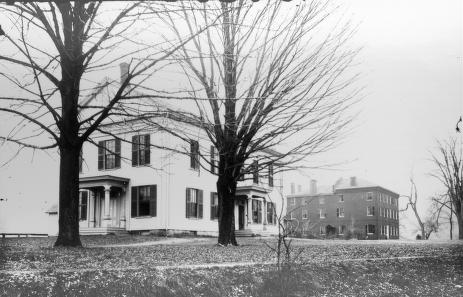|

(c) Pocumtuck Valley Memorial Association, Deerfield MA. All rights reserved.
Public Space : Balancing Diversity with Community
|
|
Americans at the turn of the twentieth century possessed a seemingly inexhaustible appetite for association and reform. New buildings to house many of these organizations sprang up across the landscape. As more newcomers arrived at the turn of the twentieth century, they too, founded organizations that supported their own cultural assumptions, faiths, and interests.
The meetinghouse had been the focal point for political and religious activity in most New England towns during the eighteenth and early nineteenth centuries. By the mid-1800s, it was clear that not any one building or institution could hope to serve the needs of what had become increasingly diverse and dynamic communities. The state of Massachusetts did not completely sever its connection with the Congregational Church until 1834, but many towns anticipated this final disestablishment by moving town meetings and other public functions out of the meetinghouse. The fifth Congregational meetinghouse built in Deerfield, Massachusetts, in 1824 was the first to be used "solely for worship." Town meetings convened instead in the brick schoolhouse located on the common. When the schoolhouse burned in 1841, the town built a town house, or town hall, on land purchased from Deerfield Academy. The Town added three schoolrooms in 1879. Extensive remodeling in 1925 altered the appearance of the building considerably. The building remained in use as a town hall until 1955.
top of page
|
Town Hall
| creator A. W. and G. E. Howes |
| date 1880-1906 |
| location Deerfield, Massachusetts |
| width 6.25" |
| height 4.0" |
| process/materials copy print |
| item type Photograph/Photograph |
| accession # #1996.12.3315 |
|





